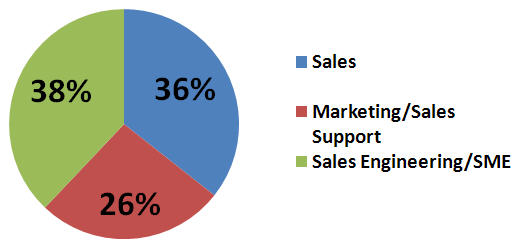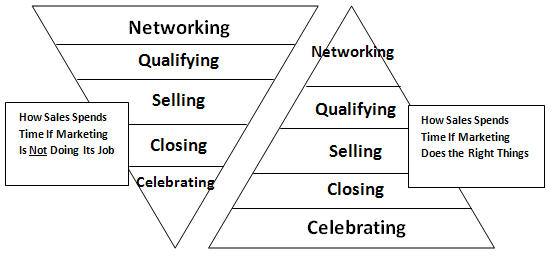I was in a strategic planning session for a client recently when the CEO asked how many sales people they needed to deliver a $1M bump to next year’s forecast. The exercise was being “spreadsheeted,” so people automatically started throwing out productivity numbers. One person pointed out that an average sales person at that company produced $600K each year, and came up with a figure of 1.67 sales people (a strange number in itself) required to deliver the sales increase. The number was entered into the spreadsheet and they went on with the exercise. It was a familiar but pointless drill… you know, the, “If I had a ten room hotel and made a $100 per night per room, then I’d be raking in a $1000 per night, and that would cover the mortgage, and I’d be a millionaire after three years” drill.
Starting the exercise by asking the question, “How many sales people…?” frames the discussion so that all it takes to put numbers on a spreadsheet is sales people. In this instance, we’ve asked the wrong question. Even though we know this is the wrong question, we are somehow seduced by it. We might as well have framed the discussion by asking, “How many salespeople does it take to screw in a light bulb?” There are lots of reasons why the “How many sales people…?” question is wrong, but let’s look at just one.
I ran a survey at a $350M high-tech company with 40+ sales people on how they spent their time. On average, the sales people at this company only spent 10.3 hours actually talking to or engaging customers. What were they doing the rest of the time? Internal activities like filling out reports, researching and lead generation. Consider the classic sales time pyramid below on how sale people spend time and what it should be.
Good marketing is essential to making sales people more effective (left pyramid) or having to hire fewer of them. If marketing can do the lead generation and qualification (or any other portion of the tasks on which sales people spend 80+% of their time), then sales can spend more time selling and closing (right pyramid). Marketing is a more efficient way to generate and qualify leads than having sales people do those tasks. We can then shift our questioning about growth from “How many sales people…?” to more productive questions like “How can we increase the sales/customer face time? Or how can we generate more leads? Or what is the balance of other resources required to add a $1M bump to the forecast?”
In another analysis, I ran numbers on time spent per client in the post-qualified-lead side of the sales funnel – the time required to support a sale by others. Marketing and support staff spent almost as much time on the sale as the sales people themselves. Sales engineering and subject matter experts spent even more time than sales people.
 The point is quite simple, yet we continually forget that while Sales is out there on the front lines, they need a lot of support. Support is like electricity for a light bulb. No electricity and nothing shines. Now, who wants to help turn the ladder?
The point is quite simple, yet we continually forget that while Sales is out there on the front lines, they need a lot of support. Support is like electricity for a light bulb. No electricity and nothing shines. Now, who wants to help turn the ladder?
Do Great Things!
Lee Stocking
Prairie Sky Group
Making Sales Cry With Qualified Leads
lee.stocking@gmail.com
651-357-0110 (Cell24x7)

